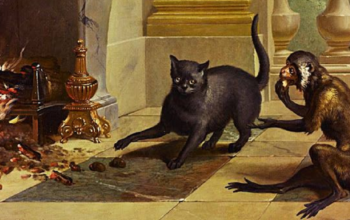
The processed cheese has been replaced with brie. The Jell-O has made way for raspberry kiwi tarts and mini-lemon blueberry trifles. Meatloaf has moved over for mahi mahi and buns have been shunted aside in favor of baguettes.
A revolution is afoot at the deli counters, grills and salad bars of the U.S. House of Representatives.
Newly ascendant Democrats may have hit roadblocks on Iraq and fiscal issues, but they have revamped congressional menus, replacing fatty, pre-made foods with healthier, gourmet alternatives. The once dreary congressional cafeterias now abound with haute cuisine.
The menu transformation is part of Speaker Nancy Pelosi’s “Greening the Capitol” plan to make the House campus more environmentally friendly and socially progressive.
But there can be a downside to delicious. Not everyone is happy with the enhanced offerings. Many congressional employees have complained that as the food quality has increased, so have the prices.
“It’s a big jump from high school cafeteria to fancy-pants gourmet. I just wish my pay improved,” said Caryn Schenewerk, a staffer for Rep. Gabrielle Giffords (D-Ariz.).
A fruit and cheese side dish with two small wedges of brie and cheddar, six grapes, two saltines and one strawberry cost $4.95, for example.
House officials explained that the fresher and more varied foods were indeed more expensive but that they had tried to preserve low-cost alternatives such as pizza, sandwiches and prepared salads, which remain around the same price.
Higher prices weren’t the only complaints.
Perhaps it was inevitable that any major change orchestrated by the Democrats, be it legislation or legumes, would draw Republican fire.
One House Republican aide lobbed attacks at the Democrats over e-mail.
“I really don’t like Nanny Nancy telling me what I can and cannot eat for lunch. If I want to eat unhealthy, I should have that choice!” the aide fumed.
Republican aides have raised questions about why the cafeterias now stock Stonyfield Farm yogurt, speculating that the move would line the pockets of the company’s CEO, Gary Hirshberg, a significant player in Democratic politics.
That assertion is nonsense, said Jeff Ventura, a spokesman for the chief administrative officer, the House official who oversees the cafeterias. He said the new food vendor, Restaurant Associates, selected the yogurt producer based on price, quality and consumer satisfaction.
“The idea that the CAO employs a political litmus test on the hundreds of food items in the cafeterias is nothing short of absurd,” Ventura said.
Several calls to Restaurant Associates’ spokeswoman Gina Zimmer were not returned.
Grumbling aside, the menu choices now available present a whole new world of congressional culinary adventures.
There is pan-roasted Chesapeake rockfish with sweet potato fennel hash and yellow pepper relish. Pears with Stilton cheese and watercress. Cumin-scented leg of lamb with almond couscous. There are vegetables with funny names, like bok choy, arugula and jicama. There are baked goods with Italian names, like biscotti, focaccia and frittati.
There are foods in funny colors, like yellow tomatoes and purple Peruvian potatoes. There are things that are free of other things, like “cage-free shell eggs,” “rBGH-free milk” and “free-range chicken.” And things that we don’t know what they mean, like turkey escabeche (salad), red pepper coulis (sauce) and seared barramundi (fish).
A vending machine sells coffee from famed chef Wolfgang Puck, offering brews such as “Vive la Crème Caramel” and “Tropic of Chocolate.”
Coffee cups have been replaced by “ecotainers” and drink cups by “greenware” made from corn starch. The napkins emerge from their dispenser one at a time, making it impossible to grab a whole stack. Nearly everything is biodegradable.
And the recycling stations, oh, the recycling stations! They are veritable shrines to a renewable Earth, with four differently shaped slots to sort garbage and lengthy directions on proper sorting. Soup containers go into the square-shaped “compostable” slot, but soup lids end up in the rounded “landfill waste” slot.
There are other enviro touches, too. The new salad bar was constructed from “green materials.” The seafood is “sustainable.” The fruits and vegetables come from local growers when possible.
Energy-efficient vending machines sport a 6-foot-tall illuminated image of trees. A poster trumpets the existence of a “pulper,” a big machine that mashes up waste into little cubes that go to compost centers, where, eventually, they biodegrade into dirt.
Even the things that haven’t changed seem cooler because their names are in foreign languages. The taco bar is the “Taqueria.” The grill is “A la Plancha.” The salad bar has expanded to “Salad/Antipasti.”
To most Hill denizens, the cornucopia of choices is cause for rejoicing — a significant switch from a menu that previously relied heavily on iceberg lettuce and vanilla pudding.“It’s been long overdue that there should be more healthy options,” said a congressional science fellow who was not allowed to speak on the record. “It was hazardous to my health to eat almost anything they had here before.”
Ventura said a popular outcry had prompted the changes.
“We had [diminished] satisfaction surveys with [the earlier contractor],” Ventura said. “People were getting disenchanted with the food quality.”
Nearly everything in the new cafeterias is biodegradable, from plates to utensils to straws, and that situation has produced a few peculiarities. For example, there are no soup spoons, only teaspoons. The company that manufactures the biodegradable flatware doesn’t make soup spoons yet. And some people have complained that the compostable straws can melt in hot liquids.
Politico headed to the cafeteria at the Rayburn House Office Building to test this scenario. A compostable straw placed in hot coffee did indeed become pliable and droop, although it never disintegrated entirely.
Ventura said customers would have to change their behavior to accommodate the environmentally friendly products.
“We have had a few people observe that [straw] phenomenon and we had to tell them, ‘Sip your coffee like a normal human being,’” Ventura said. “We’re trying to save the planet here.”


